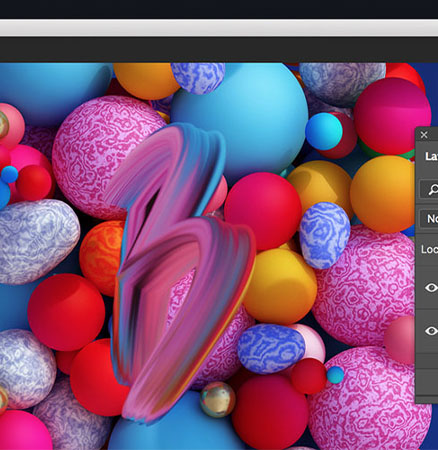Creative Cloud All Apps
QR211.00/mo
Get 20+ creative apps, including Illustrator.
See what's included | Learn more
From block lettering to calligraphy, a wide array of typography styles is available to artists and designers. Understand the subtleties of different lettering fonts and styles before selecting one for your work.
In art and design, lettering refers to the stylistic creation of typography. Lettering designs are often specially created for individual projects — everything from business letterheads to customised signage and comic book covers — and are more versatile than standard fonts. “When you’re creating something distinct to fit a project or a person, you have more control over lettering and can mould it to fit the space,” notes hand-lettering artist Jen Krause. “It can have more personality and uniqueness.” That’s because every letter, shape and curve can be custom-tweaked to fit your needs and your vision.

It’s important to differentiate between lettering styles and fonts. Where lettering refers to stylistic, custom typography, a font is defined as a set of characters and letters in one uniform style and size. While you can adjust the kerning and size of fonts, they’re more rigid to work with than creating your own. But starting with a font — rather than starting each letter from scratch — can save time and spark new ideas for creating customised lettering. “When you’re learning, starting with a general typeface design isn’t a bad idea,” designer and artist Robin Casey says. It gives you a frame of reference to start from, and you can use it as a wireframe.”
Traditional calligraphy.
Calligraphy is the design and creation of hand lettering with a brush or other writing tool. Traditional calligraphy covers specific hand-lettering styles, like Copperplate and Spencerian, that were created with distinct strokes and formations. Rules govern the shape and execution of these letters, similarly to a font.
Gothic lettering.
One traditional form of calligraphic lettering is Gothic, sometimes called “black letter.” This script style was used extensively throughout medieval Europe and was created by making heavy downstrokes with the brush. Forms of it were also used in early printing presses. Nowadays, you’ll often see black letter or gothic lettering in tattoos or signage.
Modern calligraphy.
Modern calligraphy is any form of calligraphy that’s untraditional in its looser, more organic form. Script, cursive and brush lettering are all viewed as modern calligraphy, contributing to its recent rise in popularity. While traditionally done with ink or brush pens on paper, new apps like Adobe Fresco are bringing calligraphy into the digital world.
Serif lettering.
Serifs are the small lines or marks added to the ends of letters in certain typography styles. These tapers are sometimes called “tails” or “feet” and can lend a more formal look to your lettering. Serif letters can also take on an ornate, stylistic look when flourishes are added for decorative purposes.
Sans serif lettering.
Any lettering without serifs is categorised as being in the sans serif style. Without tails, this lettering style looks modern and clean. Styles like monoline (where lines are all the same weight) and block letters (where the letters never connect or touch) fall into this category.
New lettering styles.
New lettering trends are always emerging and changing. Consider different styles like graffiti lettering or Bauhaus fonts that developed from cultural trends and took on a life of their own. Current events impact design, so always keep an eye out for new fonts and lettering styles that arise with the times to stay on trend.
Entering the world of lettering is an artistic endeavour, one with even more creative options when done digitally. With the right software, you have control over every curve and line to achieve the exact letterform your project demands. Here are a few lettering tutorials and insights to get you started.



“When you’re learning lettering, there is no right or wrong way to do it,” Casey says. Get started and discover the way that works best for you.
When looking for new lettering ideas, keep your eyes open to all sorts of creative influences. “I look at people’s handwriting on old recipe cards and handwritten letters,” says Krause. The world of lettering is wide and varied, so take a look at projects like these to fuel your imagination.
Remember, according to Krause, “you’re not perfect, but you’re also constantly improving and perfecting your lettering skills.” Lettering takes practice to master, so be patient with yourself and have fun as you jump in and create something new.
Create logos, icons, charts, typography, handlettering and other vector art.
Picking the right font: Serif vs. sans serif.
Choosing between serif or sans serif fonts means considering user experience, attitude and history.
Learn about kerning and how to use it to improve your typography.
Try your hand at pencil sketching.
Pencil drawing is an essential first step for most artists. See how this skill can improve your art.
Explore the art and science of typesetting.
Learn about typesetting methods like tracking and padding that help improve readability in design.
QR84.00/mo
Get Illustrator on desktop and iPad as part of Creative Cloud.
QR211.00/mo
Get 20+ creative apps, including Illustrator.
See what's included | Learn more
.../mo
Save over 60% on 20+ Creative Cloud apps — includes Illustrator. Learn more
QR131.00/mo
Get Illustrator and 20+ Creative Cloud apps plus exclusive business features.
See what's included | Learn more
QR84.00/mo
Get Illustrator on desktop and iPad as part of Creative Cloud. Learn more
QR211.00/mo
Get 20+ creative apps, including Illustrator.
See what's included | Learn more
QR73.00/mo
Save over 60% on 20+ Creative Cloud apps — includes Illustrator. Learn more
QR131.00/mo per licence
Get Illustrator and all the Creative Cloud apps plus exclusive business features. Learn more